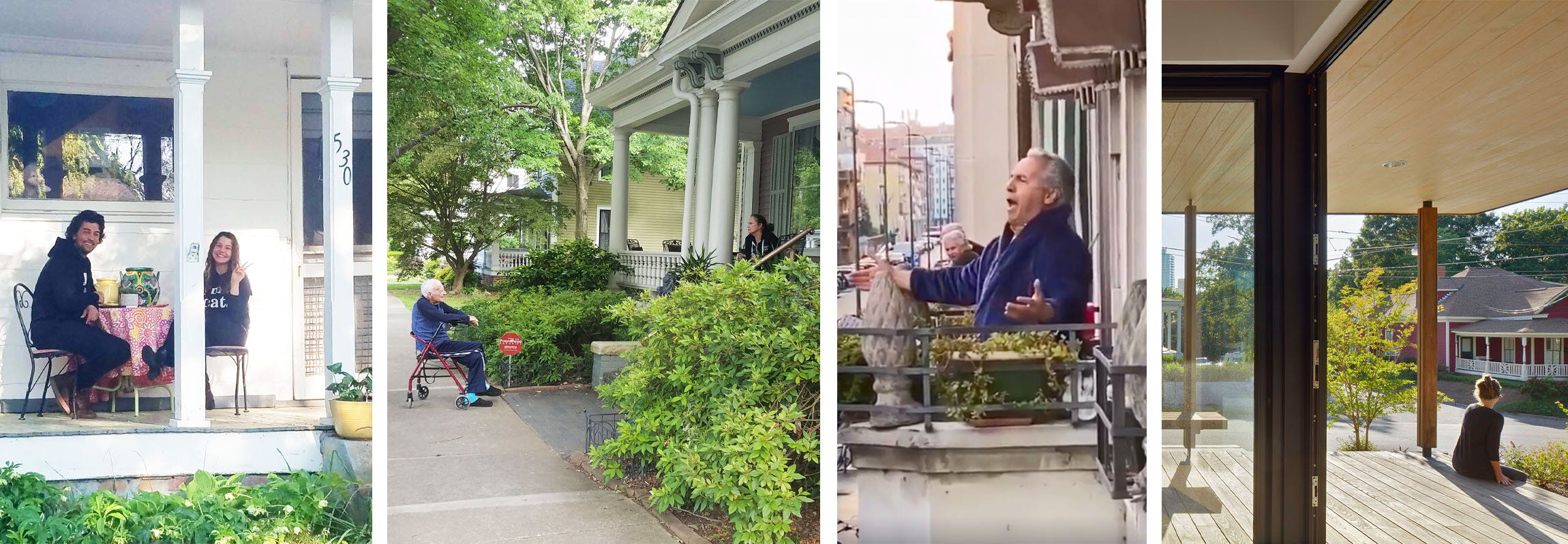Staying at home during this pandemic feels different for each of us, but there is one thing that makes a world of difference: Can you go outside? Do you have a yard, balcony, porch, stoop, alley or any kind of personal outdoor space? Our homes are like clothes, if they are too tight-fitting, they start ripping at the seams. We need flexible homes with “give,” that stretch, that breathe in and out, and offer us a range of places to be.
You don’t have to live in a big home or apartment to feel a sense of spaciousness and ease. In fact, architects have long known that if you have easy access to an outdoor space, your indoor space can be smaller and still feel much bigger than a space with no access outside. It’s being given that choice to step outside and connect with nature, neighbors or the street that makes all the difference, and it’s especially true during this time of Covid-19.
It’s wonderful to see people fully inhabiting their lots these days, from house wall to the street and beyond. In my neighborhood, and in many across the globe, people are pushing the boundaries of how to connect socially from their homes. Front yards become extended living rooms, happy hours pop-up across driveways, and porch concerts attract street audiences of neighbors. It’s a way of connecting with the only public space still immediately available to us, the street we live on.
When inside life is allowed to spill out, it enlivens the street as well, of course, expressing the diversity of life in the neighborhood. Noticing where neighborhood life is springing up gives us clues as to how to spread it. Why do we see it on some streets and not others? It’s worth asking how our environment enables or inhibits human life and interaction.
What about the porch-less, the yard-less, the balcony-less, people without any protected outdoor space to spill out onto? Too often we see tragic missed opportunities around us, where easy connections to the outside could have been made. There are condos near me, for example, where outdoor living is squeezed into tight balconies with an expanse of empty green just past the railing. Further down the street is senior housing, with no doors to the outside, sitting right next to a large unused park. Suffering occurs on both sides of these building walls. Trapped inside, lonely seniors remain isolated on one side while a city park remains dead on the other. A kind of spatial surgery is needed here, to connect and enliven both sides, a win-win.
Whether it is a detached house or urban apartment, the nature of the walls that enclose us, these “layers of clothing” we wear, determine how we relate to the social and natural world around us. Can you open your windows, feel the change of seasons or time of day, have morning coffee on a balcony or chat briefly with a passing neighbor?
And size matters. A two foot deep outdoor space is very different from one that is 6’ deep or more. The amount of use you get for each extra foot of depth is huge. Homes are typically measured in terms of cost per square foot, with outside space routinely undervalued and seen as “extra.” A more useful metric would be “LIFE per square foot.” How much more life is generated by each additional square foot, regardless of whether it is inside or outside? One more foot of depth and you can sit in a chair, three more feet and you can have family dinners outside, etc. Our exterior walls should be designed as “zones,” with depth, a space unto themselves, not mere planes, especially in the context of housing.
I am lucky enough to live in a neighborhood where having a porch is the norm, but why can’t some form of such a simple, low cost space be an accepted part of every neighborhood? We weren’t made to live in boxes. We need thresholds and close, accessible outdoor spaces. These transitional spaces are essential to any humane human habitat, regardless of how dense, for our social, mental and physical health. They are a kind of “handshaking zone” between each of us and the world beyond our doorstep. We must work to weave these kinds of spaces into all our housing, streets and neighborhoods, because if there is anything this pandemic has taught us, it’s that we weren’t meant to live in isolation. We need connection and we need each other. Let’s nurture that.
NOTE: See David Sim’s new book “Soft City” for further reading about living “softly” together.







